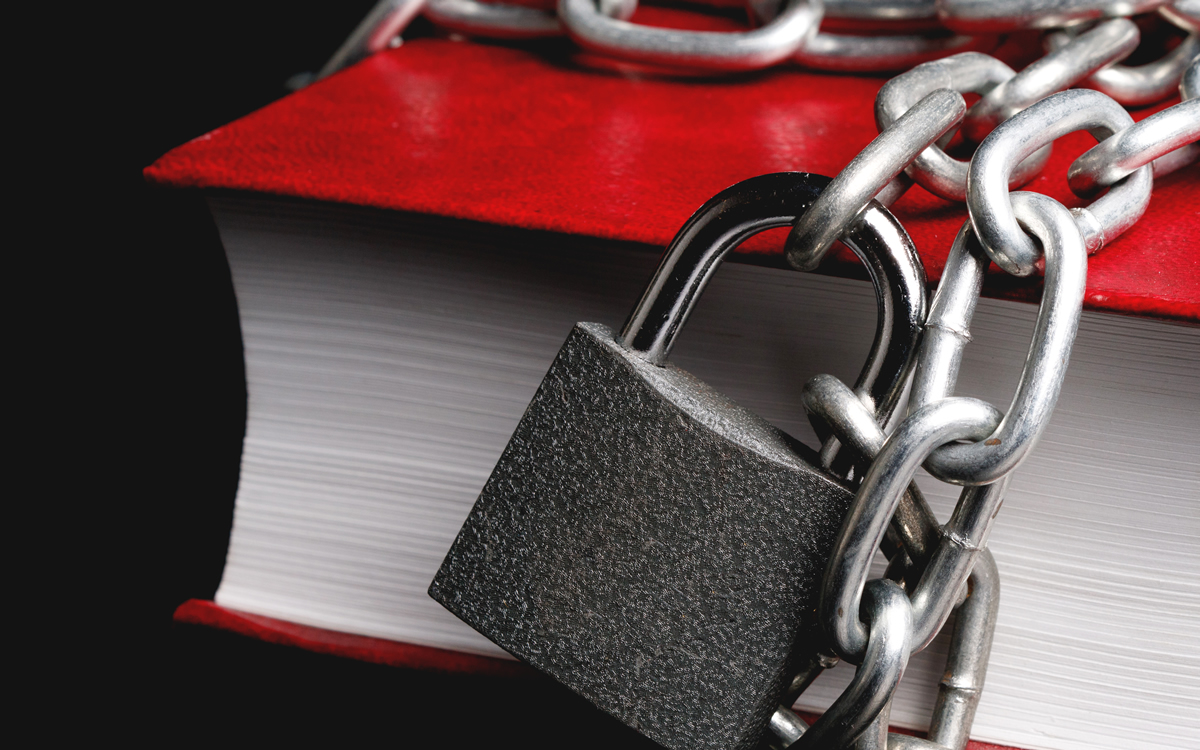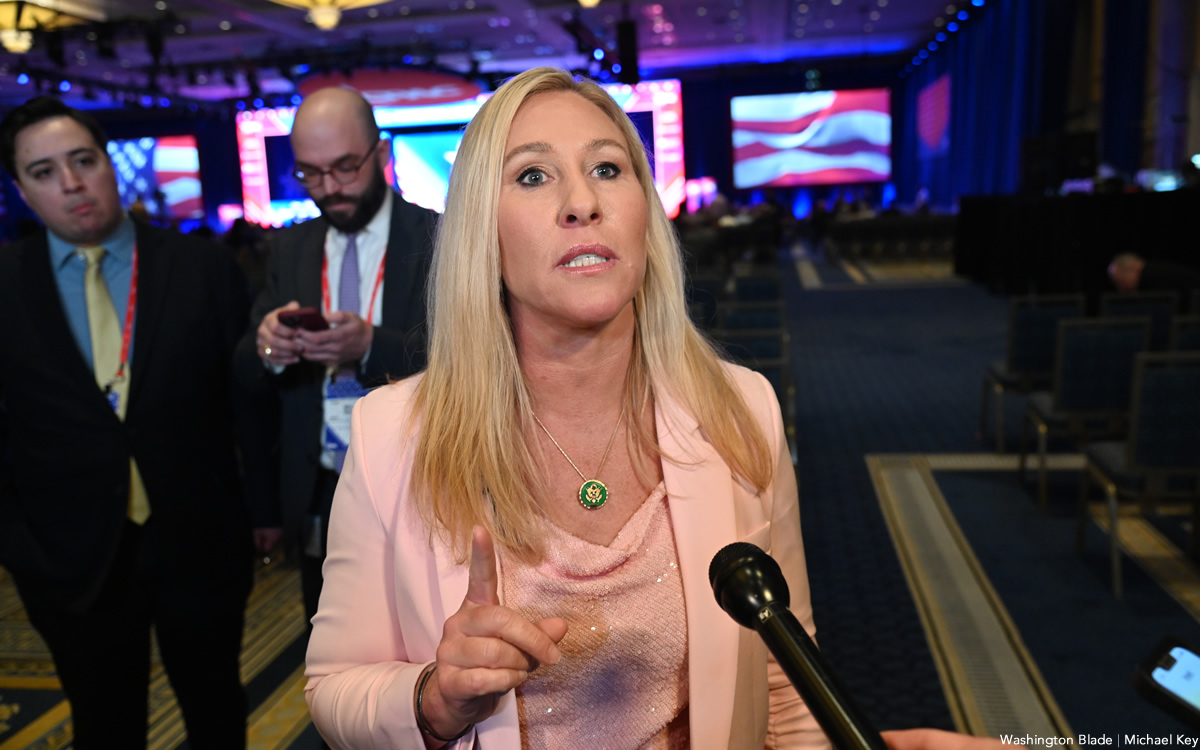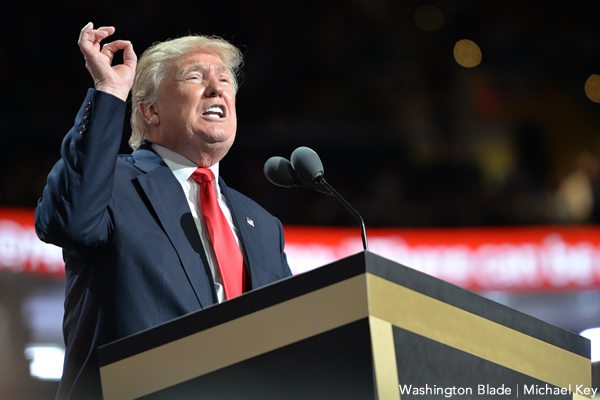Opinions
Banning books: The greatest scheme to get kids to read again
The oldest unintentional human marketing plan ever

Don’t touch that hot stove! Don’t pull the dog’s tail! Don’t say bad words! Tell a kid that they can’t do something and what’s the normal response? Do it. Why? Because your parents, the commanders of your universe, told you not to not to do it (which is the simultaneous birthplace of both your curiosity and independence). Don’t they remember being a kid — and that delicious wanting to know what’s on the other side of “Don’t?”
One of my greatest joys as an author is to inspire kids to read. Books were my curiosity creators and my independence days, dreaming up entire universes of imagination and possibility, all within this hand-held, human-made wonder.
But being told “Don’t read that book.” Or better yet, ban it. Huh? Why?
You — the book banners of the world— have now unleashed one of the oldest unintentional human marketing schemes since the dawn of kids. The “Don’t.” You have done the one thing you can’t do to kids — make something mysterious or forbidden. And now they want to read the book you have banned. I’m sure this was not your intention but, nonetheless, you have unleashed the good intentions behind the power of “Don’t.” Because if the book you’re banning contains forbidden or mysterious information that adults don’t want you to read, it must be worth reading. Taboo sells.
So, to all book banners, thank you.
Banning books? The Greatest Marketing Scheme to get Kids to Read Books Again . . .
Book banners: You are now in the marketing business. Your motto should be, “Books your parents don’t want you to read.” Brilliant. That will seal the deal. Why did “1984” become a bestseller again? Because it was banned again.
And all those obscure books you’re ferreting out to ban? Now you’re really helping to put them on the map, and even making them bestsellers again. Some are books that maybe a few kids might have read, if at all. Now kids — and parents — want to read them because you say not to read them. Brilliant marketing and marvelous adult logic.
The 10-Million Pound Elephant in the Room is the Internet. If you’re scared of the books in the library, you should be horrified at the Internet. You think that banning books about identity, sexuality, racism, slavery, or finger painting is going to stop a kid from wanting to know — if they want to know more? Nope. Now they can turn to your worst nightmare — the Internet. Because most likely what they’ll encounter on the web is absolutely everything you don’t want them to see or hear in the most graphic ways you can and can’t imagine. If nature abhors a vacuum, then curiosity abhors knowledge that’s locked up.
By banning a book, you are choosing to decide my own — and everyone else’s — reading destiny. Freedom is not about taking one’s choice away. It’s about allowing more choices. It’s trusting us to figure it out all on our very own. And the liberty to choose what to read — or not.
Taking away a book that’s offensive offends me. Books are easy to bully. You can find anything in any book you want to be offended by and that’s the ultimate slippery slope of book banning. Heck, you can even be offended by “The Cat in the Hat” or “Winnie the Pooh” if you’re so inclined. But fundamentally when you ban a book, you take away my freedom to be offended by something I may want to read — or not. And that’s offensive.
What are we teaching our kids? Fear. Fear is what we teach our kids when we don’t want them to know. Banning books is about banning knowledge. And when we don’t trust them with knowledge, we lose our ability — and respect to talk. Because fear loves secrecy. It thrives on lack of communication — the worst thing you can do with kids who are trying to figure out the world. It’s so much better to talk with them about ideas that they’re curious about because they’ll find out anyway — and maybe not in a responsible, mature way.
What should we teach our kids? Trust. Let’s trust our kids to explore. To be curious. And give them the freedom to be curious. That’s the most powerful form of liberty for kids.
Our job as parents is to teach our kids where knowledge fits into their world. How to question it and how to use it — or not use it. The freedom to learn, to question, to comprehend, to converse, and to do it over and over again is one of the greatest legacies that books continue to give the world, and nobody can take that liberty and legacy away from us.
Carew Papritz is the award-winning author of the bestselling inspirational book, ‘The Legacy Letters.’ Through his innovative literacy efforts to inspire kids to read, Papriz has created the ‘I Love to Read’ and ‘First-Ever Book Signings’ through his ‘CarewTube’ video series.
Opinions
Everything is Everything
Transformer’s 21st Annual Benefit Art Auction & Gala at the LINE DC November 19, 2025

In Washington, DC, art has never existed in isolation—it thrives where people gather and create. Art isn’t an accessory to the city’s identity—it’s foundational to it. This city was designed by artists, built by craftsmen, and has been continuously shaped by creative vision for more than two centuries. While other American cities grew organically around commerce or geography, Washington was imagined first, drawn by hand, and constructed as a deliberate artistic expression of democratic ideals. The result is a living gallery where public art doesn’t just reflect our history; it actively shapes how we understand citizenship, memory, and identity.
For 23 years, Transformer has been a cornerstone of DC’s contemporary art scene, committed to uplifting emerging and underrepresented artists who challenge boundaries and engage audiences with new experimental artistic concepts. On November 22, 2025, Transformer will host Everything is Everything, our 21st Annual Benefit Art Auction & Gala at the LINE DC, a night dedicated to celebrating the power of connection through art, performance, and community.
Everything is Everything is an extension of our non-profit organization’s cutting-edge vision, bringing together artists across different mediums, aesthetics, and walks of life. This philosophy embraces interconnectedness: where art, identity, and community are a part of the same living fabric. The gala brings together hundreds of people to celebrate art & artists, featuring over 140+ artworks in a public exhibition available for silent bidding. Guests also enjoy our innovative Artist Activated Experiences Lounge, featuring immersive installations by DC based queer artists Bumper, Katie Magician, Div0id, JaxKnife Complex, Stitches DC, Hennessey and Kunj.
In a time when queer and drag performers face renewed cultural and legislative attacks, Everything is Everything affirms that freedom of expression is not optional—it’s essential. Our “Celebration of DC Club Kids” pays tribute to DC’s legendary Club Kids and nightlife culture—those radiant spaces that have long nurtured queer creativity, self-expression, and freedom. Produced at the Gala in collaboration with queer artist collective haus of bambi, this performance honors our city’s history while celebrating the diversity and creativity that will continue to shape its future. Everything is Everything culminates in a show-stopping performance by iconic New York City based performance artist, cabaret singer, and drag artist Joey Arias.
As Transformer’s Everything is Everything Gala Committee, we’ve experienced firsthand how artists in DC transform spaces, challenge norms, and build community. The Gala is a celebration of that creativity and resilience. It is also a crucial act of support: proceeds from the Everything is Everything Benefit Art Auction & Gala directly supports artists while sustaining Transformer’s year-round exhibitions and programs that elevate emerging artists and arts leaders within DC and beyond. In doing so, Everything is Everything ensures that experimental and inclusive artistic practice, particularly of queer, trans, and BIPOC artists, continues to thrive.
Because in DC, art isn’t just something we look at—it’s something we live, share, and fight to protect.
Purchase tickets to Everything is Everything, Transformer’s Annual Benefit Art Auction & Gala at onecau.se/everythingiseverything. Learn more about Transformer’s mission at www.transformerdc.org.
- Transformer’s Everything is Everything Gala Committee: Allana D’Amico, Sondra Fein, Theresa Nielson, Jennifer Sakai, Christopher Addison, Monica Alford, Samantha Dean, Samira Farmer, Carole Feld, Celina Gerbic, Ally Helmers, Allison Marvin, Marissa McBride, Tom Noll, Crystal Patterson, Victoria Reis, Dorothy Stein, Emily Strulson, Gregg Tourville, José Alberto Uclés, and Hanna Thompson
Opinions
MTG should keep up the pressure on Trump, MAGA
Unexpected flip a welcome sign of GOP resistance

If the first time you ever saw, or heard, Rep. Marjorie Taylor Greene (R-Ga.), was when she appeared on “The View,” you could be forgiven if you thought what an intelligent, rational, woman she is. If it wasn’t the first time you saw her, you just wondered what happened to the wacko you thought you knew.
Marjorie Taylor Greene has stood up for the women who were the victims of Jeffrey Epstein and his friends. She was one of the 218 who signed on to bring the bill to release the files to a vote in the House. I think the vote will be more lopsided than people think, getting many more Republicans. After it passes the House, it will go to the Senate, and if it passes there, to the felon, for him to decide — will he sign it or veto it?
Greene has also spoken out and criticized the Republican Party for not agreeing to extend the tax credits for the ACA, to ensure the cost of insurance premiums remain at least affordable for most. Again, we all had to wonder what happened to the real MTG, the non-repentant Trumper. This version of Greene has driven the president to an apoplectic state. He has given her a new nickname, and accused her of betraying the entire Republican Party. These are quotes from Trump on social media last Saturday: He called her the “Lightweight Congresswoman Marjorie Taylor Brown (Green grass turns brown when it begins to ROT!),” based on what she said. He accused her of turning left, and according to him “performed poorly on the pathetic View, and became the RINO that we all know she always was. Just another fake politician, no different than Rand Paul Jr. (Thomas Massie), who got caught being a full-fledged Republican In Name Only (RINO)! MAKE AMERICA GREAT AGAIN!!!.”
Although I support what Greene is saying on these two issues we shouldn’t forget Greene is the woman who said, “joining the military is “ like throwing your life away” while discussing the U.S. withdrawal from Afghanistan on Fox News. She also said regarding two July 4th incidents in which seven people were fatally shot at an Independence Day parade in Highland Park, Illinois, and two police officers were gunned down in Philadelphia, “Two shootings on July 4: One in a rich white neighborhood and the other at a fireworks display. It almost sounds like it’s designed to persuade Republicans to go along with more gun control.” Then when talking about the Jan. 6, 2021, attack on the Capitol, in which hundreds of Trump supporters stormed the building to stop certification of the presidential election results, she called it “a little riot.” Very bizarre. We are all definitely living in Trump’s alternate universe.
I think the thing that bothers the felon the most is Greene’s insistence the Epstein files be released. It is interesting there is nothing yet public that implicates Trump in actively participating in any pedophilia with Epstein. Some of the released emails do implicate him in knowing what Epstein was doing, but not speaking out about it. But what is making the felon in the White House apparently hysterical, and fighting so hard, to keep the Epstein files from the public? What does he know is in them, that we don’t? He has tried every distraction to move this off the front-page including bombing Venezuelan ships he claims are carrying drugs, without any proof, and threatening a land war against Venezuela. Since that hasn’t worked, he is having his AG, his lapdog, Pam Bondi, have a prosecutor look at only what Democrats could be involved in the Epstein scandal, clearly hoping if there is an active investigation it could keep the files away from the public, possibly for years.
Because of the recent election results, the felon is backtracking on the tariffs he said were so important, and a huge positive, for the United States. Those results clearly showed the people are blaming him, and the Republican Party, for the rising prices. Even to a clueless, evil, human being like him, it has become clear the tariffs are making life worse for the American people.
So, I say to Marjorie Taylor Greene: Stay this new course you are on. Keep up the work attacking the felon, and Republicans who are going along with him. Know that even those of us who think you are a wacko, thank you.
Peter Rosenstein is a longtime LGBTQ rights and Democratic Party activist.
Opinions
Community must honor all trans people on Transgender Day of Remembrance
Trans people more likely to be disabled, face bias within medical systems.

Our community has let marginalized people down. That’s the simple truth we need to hold on this Transgender Day of Remembrance. And, believe me, I don’t say this to accuse anyone. But marginalized trans people — including BIPOC, disabled and neurodivergent people, refugees and asylum seekers — are disproportionately affected by transphobic violence that too often goes unchecked, unreported, and unchallenged. And the wider LGBTQ community hasn’t done nearly enough to change this.
From the very beginning, Transgender Day of Remembrance was about marginalized trans lives.
In 1999, transgender activists Gwendolyn Ann Smith, Nancy Nangeroni, and Jahaira DeAlto founded TDoR a year after the killing of Rita Hester, a Black trans woman, to honor her memory and the memory of all trans people lost to hate-motivated violence. Hester was openly trans, courageous, and ready to speak up against transphobia. Her death was noticed, but not all marginalized trans people are so lucky.
Now, as I prepare a speech for my city’s TDoR vigil — a speech about intersectionality, because I’m a trans, autistic, ADHDer refugee from a mixed background — I’m not even sure where to begin. You could write entire books and academic studies, hundreds of pages, about why and how marginalized trans people are under attack. But none of that fully captures how deeply normalized these risks have become in our daily lives.
We trans people living at multiple intersections have become targets of jokes about the “woke agenda.” If characters like us appear in mass culture, countless people try to convince the world that we can’t be real. When a celebrity like us exists, they’re treated as a curiosity. And meanwhile, the very real violence against people like us goes unnoticed.
It is known that trans adults are more likely to be disabled than cisgender adults, in part because of the failures and biases within medical systems. We also know there is a significant overlap between trans identity and autism for reasons we don’t yet fully understand. But what we do understand is this: disabled trans people and autistic trans people are often denied autonomy, recognition, and basic respect. Worse, we face a bigger risk of violence and hate crime.
And in the context of the modern U.S., this danger is multiplied.
The country is experiencing the largest coordinated wave of anti-trans legislation in its history: hundreds of bills targeting every aspect of trans existence, from healthcare to public spaces. At the same time, the immigration system has become increasingly hostile. When the government targets both trans communities and refugees, trans refugees end up trapped in the gap between two systems that refuse to take responsibility for protecting them.
For many trans refugees, especially autistic and disabled ones, the greatest danger starts not when they are deported, but the moment they enter the U.S. immigration system. U.S. Immigration and Customs Enforcement detention is notoriously unsafe for trans people, particularly trans women who are often placed in men’s facilities, denied hormones, subjected to harassment, or put in solitary confinement under the excuse of “protection.” ICE excluded trans statistics from its public reports, trying to erase trans people on a systematic level, to make this discrimination invisible.
For autistic trans women, the sensory overload of detention — the noise, the lights, the shouting, the unpredictability — can be unbearable. ICE facilities almost never have staff trained in autism, mental health, disability communication, or even basic general and cultural competency. Many autistic trans refugees simply cannot navigate complaint procedures, medical requests, or legal paperwork without support that does not exist inside the system.
The problems don’t stop after release.
The U.S. asylum process demands documentation and formal proof of persecution that many refugees, especially autistic people, people with mental health issues or learning disabilities simply do not have. The violence they experience is often undocumented precisely because they were trans, because they were autistic, or because the police in their countries refused to recognize them. Immigration judges frequently misinterpret autistic communication as “inconsistency,” or dismiss their stories because they express trauma differently. For Black and brown trans refugees, the credibility gap is even wider.
And where are they supposed to turn for help? To refugee organizations that often have no training in trans issues, no understanding of gender-affirming care, and no knowledge of hate-crime risks? Or to LGBTQ groups, which may be strong advocates but rarely have immigration lawyers, disability-trained staff, autistic-friendly politics or experience dealing with ICE? What does a trans refugee woman do if she is also autistic and struggles with bureaucracy, communication, or social interactions? Who takes her seriously? Where does she go to report violence when the police misgender her, the immigration office overlooks her, and the community organizations don’t have the tools to protect her?
Let’s not forget that autistic people are also under attack in the current American political climate.
Disability rights — including the right to live independently, the right to healthcare, and the right to refuse institutionalization — are being eroded. Studies suggest that up to 90 percent of autistic women experience some form of abuse or violence in their lifetimes. Can you imagine the data for trans women? Or men, or nonbinary people? Combine that with transphobia, racism, xenophobia, and the fragility of the asylum system, and you create a situation where a trans autistic refugee is left almost completely unprotected.
As a trans autistic person who has worked with trans communities, autistic communities, and refugees for over 11 years, I can say with absolute clarity: you cannot separate one form of discrimination from another. Institutions don’t know how to handle cases at the intersection. Even in the best-case scenarios, in the “best” countries, police, and social services struggle to understand the needs of someone who is trans, autistic, disabled or mentally ill, racialized, and displaced. From Ukraine to Russia, from the UK to the U.S. — in every place I have lived or worked — LGBTQ organizations still lack a proper strategy for protecting trans people who live at these intersections.
And until we confront this honestly, until we build structures that acknowledge the reality of those who are hit hardest, Transgender Day of Remembrance will continue to mourn the same people we keep failing to protect. Or worse, the death of the most vulnerable victims of transphobia would still go unnoticed and undocumented.
-

 District of Columbia3 days ago
District of Columbia3 days agoD.C. LGBTQ bars ‘hanging in there’ amid tough economy
-

 District of Columbia1 day ago
District of Columbia1 day agoNew LGBTQ bar Rush set to debut
-

 National3 days ago
National3 days ago213 House members ask Speaker Johnson to condemn anti-trans rhetoric
-

 Chile4 days ago
Chile4 days agoChilean presidential election outcome to determine future of LGBTQ rights in country


















